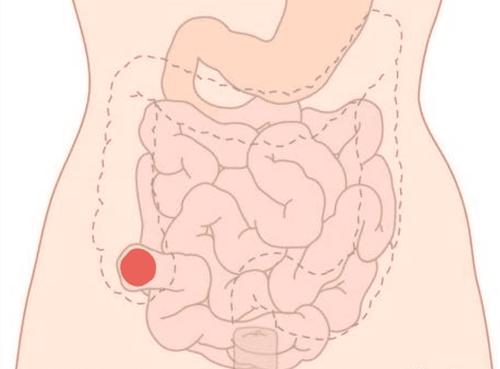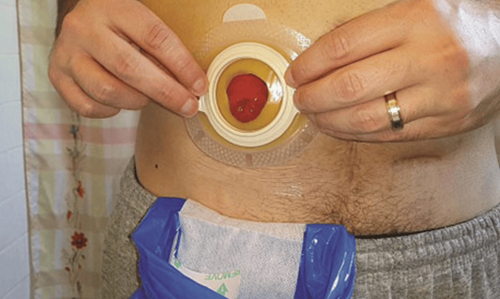This is an automatically translated article.
1. Learn about ostomy
A colostomy is one of the major surgeries that creates a pathway for waste from the colon to exit the abdominal wall without going through the rectum. This is done actively on the body with the aim of permanently or temporarily waiting for the recovery of the colon.Open colostomy in the following cases:
Patients with colon and rectal cancer in advanced stages and/or with complications need colostomy.
In some other cases, the patient may need a colostomy if:
Intestinal obstruction, bowel necrosis due to causes Tumor of the lower part of the rectum Colon rupture causing severe abdominal infection

2. How many types of ostomy are there?
The colostomy position must meet the following requirements:In the flat abdominal wall (for easy attachment of the stool bag) Lying on the waist for easy observation and self-care The colostomy type named after the anatomical location of the colon
Sigmoid colostomy: This is the most common type. Located near the end of the colon, just in front of the rectum. When doing sigmoid colostomy, the stool will be harder and physiologically similar to normal stool.
Transverse colon stoma: The transverse colon is located horizontally above the epigastrium. Because this part of the colon absorbs less water than the lower part of the colon, stools in the transverse colon are usually softer. There are three common types of colostomy in the transverse colon.

Loop colostomy: Loop colostomy is performed faster than a terminal colostomy and is usually temporary in nature, this colostomy will create a larger tunnel of the abdominal wall so there is a risk of exiting artificial colostomy. The location for making this colostomy is about 1⁄4 on the right abdomen (equivalent to transverse colon) or left iliac fossa (equivalent to sigmoid colon). Occasionally, stool or gas will pass through the rectum because the colon is still continuous with the rectum. Terminal colostomy: This is usually a permanent colostomy, made after a colectomy, including the rectum and the part of the colon below the opening of the colostomy. The part introduced as an stoma is the last part of the ileum, close to the ileocecal valve, in order to ensure the sufficient length of the small intestine, to preserve the digestive and absorptive functions of the small intestine as much as possible. room for later bag creation. Gun barrel colostomy : Made faster than a septum and is usually temporary in nature. The proximal end is brought out of the abdominal wall as a temporary anus to expel waste. The distal end is also brought out into the abdominal wall, with some mucus draining out. The barrel-type colostomy will be performed with a posterior closure. Descending colostomy: Opened in the left part of the abdomen. This anal stool is usually solid because it has passed through most of the colonic framework. Usually performed for rectal cancers.
colostomy ascending: How to make an colostomy from this position of the ascending colon, only a part of the colon performs the function of digestion and absorption, leading to waste still having a high percentage of water, The excrement is often loose, making it difficult to care for. The colostomy from the colon is very rarely done, instead, the ileostomy outside the abdominal wall will be done more, more appropriate, with a small bag for excreting waste. .
3. Is there any complication of colostomy surgery?

Colonic bleeding Injury to surrounding tissues Local infection or intra-abdominal infection Bleeding from the stoma stoma Occurrence of a fistula from the colon into the abdomen, the abdominal wall The patient will receive care and follow-up care. Follow-up is about a week after colostomy surgery and full recovery can take up to 2 months. While recovering, the patient needs to abstain from certain foods.
If the colostomy is temporarily opened, the patient will need surgery to close the colostomy after the colon has recovered. This surgery usually takes place about 12 weeks later depending on the purpose of the colostomy. The closure of the colostomy needs to be monitored and assigned by the doctor, the main surgeon performing the patient.
Please dial HOTLINE for more information or register for an appointment HERE. Download MyVinmec app to make appointments faster and to manage your bookings easily.














